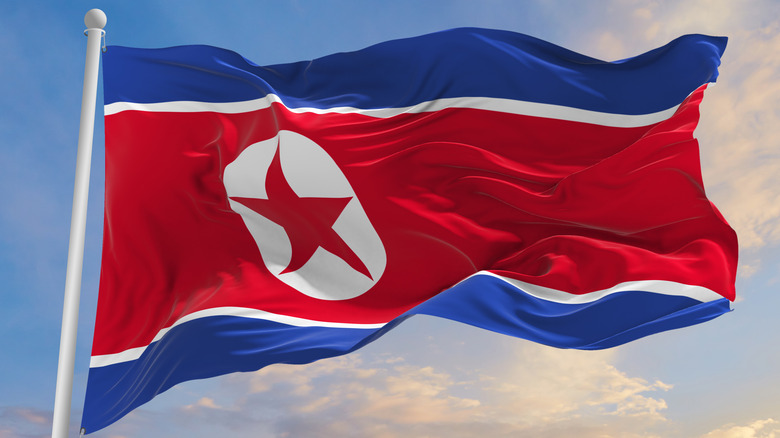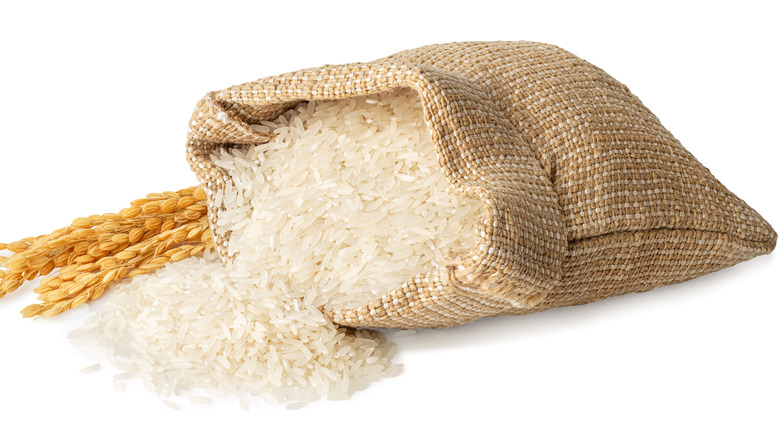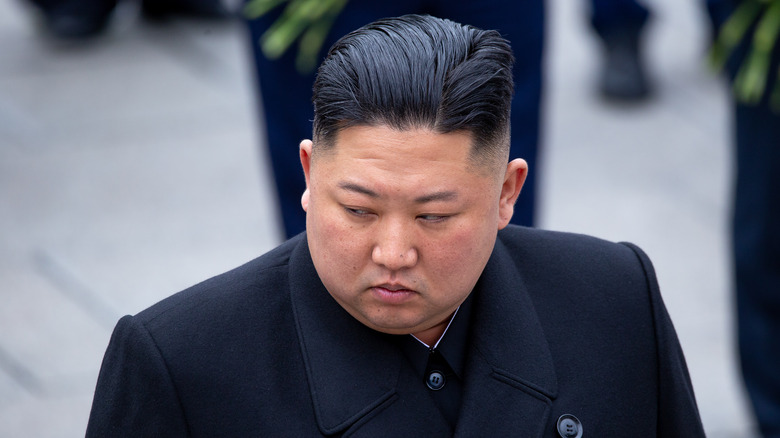North Korea Faces Life-Endangering Food Shortage In The Wake Of COVID
There are very few places in the world that are as shrouded in mystery as North Korea. The Korean peninsula was divided by the United States and Russia after World War II, and less than a decade later, an attempted invasion of South Korea carried out by the Soviet-backed Northern state resulted in the prolonged, mass-casualty stalemate known as the Korean War (via History). After the war, North Korea retreated in on itself, and the country has remained in a state of near isolation ever since, which is enforced by a powerful totalitarian regime.
However, even a country that allows for minimal contact with the outside world cannot escape global events. North Korea's intense, militaristic brand of isolationism wasn't strict enough to secure the nation's borders against the dual threats of the COVID-19 pandemic and the rising tide of inflation, and recent breakdowns in the North Korean economy have left the country on the precipice of famine.
What caused the food shortage in North Korea?
A report carried out by 38North tells us that a number of different factors play a role in the current North Korean food shortage. The stressors on the nation's supply chain include an aggressive policy of self-isolation geared toward curtailing the spread of the COVID-19 virus, domestic inflation, and the global rise in food prices. The report also notes that corn is an increasingly common fixture of North Korean citizens' pantries, due to the fact that rice, generally the more popular crop, has become inaccessibly expensive.
Additionally, the country's food supply has been diminished by natural disasters, including floods and typhoons, that occurred in 2020, per ABC News. Unfortunately, by the time the disasters struck, North Korea's COVID-19 restrictions had already rendered the nation incapable of trading with its primary economic ally, China. ABC News, citing Koo Byoungsam of the South Korean Unification Ministry, tells us that North Korea produced 4% less food in 2022.
A history of food shortages in North Korea
Food insecurity is by no means an unfamiliar issue for the citizens of North Korea, a large portion of whom subsist on simple staples like rice and corn porridge, even at the best of times. The glaring discrepancy between the lavish lifestyle of the nation's totalitarian dictator, Kim Jong Un, and the impoverished common people becomes readily apparent when you examine Un's expansive appetites. In 2016, while many North Koreans struggled to find food, Kim Jong Un held a cooking competition in the style of "Master Chef." While most of the nation's citizenry survives on meager meals, Un dines on rare spirits and meat-laden pizzas.
When referencing the recent food shortage, Kim Jong Un has made reference to the Arduous March, a devastating '90s famine (via NPR). According to The National Interest, the Arduous March resulted from a few situations that are similar to the causes of the current food shortage. Flooding in 1995 wreaked havoc on the nation's crops, and the collapse of the Soviet Union suddenly left North Korea without an economic ally, much like how modern-day North Korea distanced itself from trading partner China during the height of the COVID-19 pandemic.
Though the 'official' death toll of the Arduous March, as per the North Korean government, is between 200 and 300,000, it's possible that the real figure is actually in the millions — another famine of that scale happening in the coming years is a truly horrifying thought.


